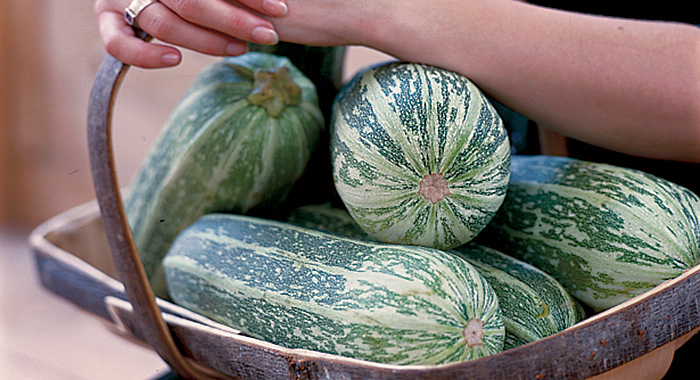
A marrow is a cucurbit, which means it’s from the same family as the melon, cucumber, squash and courgette. The marrow is actually a courgette that has been left on the plant to grow a little longer; likewise, if you pick a marrow when small, it’s classed as a courgette. Marrow has a creamy flesh, edible skin and seeds, and a mild flavour.
Availability
In season in August and September.
Choose the best
Size matters – a huge marrow is best reserved for a horticultural competition. Hunt out the smallest marrow you can find; it should be no bigger than your forearm. Large marrows will taste bitter and have a watery consistency.
How to prepare marrow
You can steam, bake, boil, fry or roast marrow. The stripy skin is edible, but if you are roasting or frying you might want to remove the seeds and stringy middles so you can just enjoy the flesh.
How to store marrow
Keep refrigerated in a vegetable bag if you have one, and use within three days.
How to cook marrow
Marrow is a blank canvas, so it works well with strong flavours – think citrus, chilli, garlic, bacon, spices and robust herbs, such as rosemary and thyme. Stuff them and cover with cheese, mash into savoury dishes or grate into cakes. You can also turn marrow into chutney to serve alongside cheeseboards, ham or curry. Check out our top 6 ways to serve marrow for more cooking inspiration and get stuck into our ultimate marrow recipe collection.
Alternatives
Try courgette or squash.
Be the first to comment on "Marrow"